India History
"A Brief and Simple Summary of History of India,
including ancient India History and Modern Indian History"
This article was last updated on April 14, 2012
All information below is subject to change
Quick links:
Welcome to Indian history!
Traveling to India?
Or just interested in getting to know the history of India?
Whatever your purpose is, this article takes you through the major points of Indian history, from ancient India history to modern Indian history.
Since I've studied international development studies and already read the syllabus part on Indian history, I want to focus on:
- The end of Moghul empire
- What happened during the British rule of India
- The Development years after 1947
Just as you know, I'm not a historian. But I have done some heavy research and followed history lectures at school. The sources in this article is from our syllabus and online resources.
Ancient India History
Vedic India 1500 BC - 600
Vedic civilization was centered in the northern and northwestern parts of the Indian subcontinent.
The Aryans migrated to the Indian sub continent and they started the Vedic Age. This period got its name from the four major Vedas or the sacred scriptures that were created during that time. The four sacred Vedas are Rig Veda, Sama Veda, Yajur Veda and Atharva Veda.
The Vedas are the foundation of the Hindu religion.
Mauryan Period 323 to 185 BC
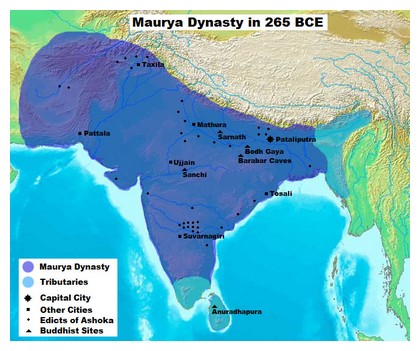
India history: Maurya Dynasty - photo courtesy: Vastu at en.wikipedia
After the Vedic period, came the Mauryan dynasty which lasted from 323 to 185 BC.
The third Mauryan emperor, Ashoka (273232 B.C), is one of the most famous rulers in Indian history because of his conversion to and support of Buddhism.
Ashoka believed in non-violence and cooperation between religions.
The Golden Age - Gupta Empire - 320-600s
The reasons why this is called the Golden Age is because the Gupta empire was characterized by:
- Inventions and discoveries in science, technology, art, literature, mathematics, astronomy, philosophy etc which today is known as Hindu culture. Rewards of money were given to writers, artists, and scholars to encourage them to produce wonderful work, and they did.
- The people of Gupta had religious freedom and they were given free medical care.
- This period was a time of law and order. Criminals were never put on death row. Instead, they were fined for their crimes.
India history: Delhi Sultanate
1206-1526

During the Delhi Sultanate, several Muslim dynasties (Turkic and Afghan) ruled from Delhi.
These Muslim dynasties included:
- The Khilji dynasty (12901320)
- The Tughlaq dynasty (13201413)
- The Sayyid dynasty (141451)
- The Lodi dynasty (14511526)
The start of Mughal Empire
1526-1707
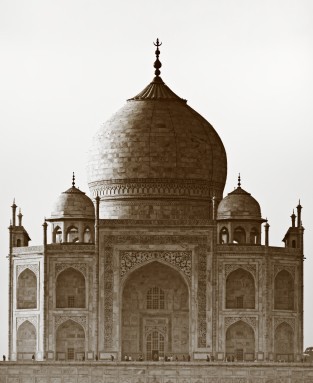
In 1526 the Mughal dynasty was founded when Babur invaded parts of northern India and defeated the ruler of Delhi.
The Moghul empire stretched from Afghanistan in the west and to Assam in the east.
What happened during this era:
- During 1600s and 1700s there were several Hindu kingdoms established in the regions. Also, Muslim leaders established their own states.
- In 1631 the emperor Shah Jahan built the Taj Mahal in memory of his wife Mumtaz, who died in childbirth. The Taj Mahal has become the monument of a man's love for a woman.
- India had a central position in the trading industry between Asian countries, East Africa and Arabic countries for centuries before Vasco de Gama showed up on the southwest coast in 1498. The Netherlands, France and Great Britain came afterward in 1600s and 1700s to get their share of export goods. During this time, no country could measure up to Indian products and its quality.
- British traders used Indian textile products as payment for slaves from the West African coast. By 1700 India had a gross national product of approximately 25% of the world market, while Great Britain only had 3%. The East India Company (EIC) was established in London in 1601, and arrived in India the following years.
Moghul Empire dissolving

In mid 1700s the Moghul Empire was prone to several invasions from the northwest.
In 1739 Persian forces went into what is today's Teheran. Afghan troops tried to conquer Delhi, but failed.
Even though they failed, it still weakened the empire and at the same time the British' ambitions along the coast started to grow.
During this period there was nothing much that reminded of the empire's greatness, and the empire didn't perform any direct territorial control over the country besides some limited parts of North India.
Indian people were dissatisfied with the centralized government, and rivalry between powerful men gave the British an opportunity to find local allies in India. EIC was setting up trading stations along the coast in Kolkata, Mumbai and Chennai.

From 1756 to 1763, there was a 7-year war between French and British trading companies, and Great Britain won.
India was the "prize."
France "only" got Pondicherry, located on India's southeast coast.
Sri Lanka was also included in the empire. Delhi was conquered in 1803, while the Sikhs in Punjab were conquered in 1849. More and more land areas in India were taken by the British.
1813 was an important year. That means that EIC had to recede for British trading interests. It was agreed that India should be opened for missionary companies to lift up people "with low-leveled religions and cultures" (that was their opinion).
For example Hinduism was considered as evil and brutal.
During the 1800s the government made some drastic changes in the agriculture production.
There was an interest in growing indigo and tea for export. The sudden change was that farmers were tasked to grow opium.
India became the world's most important producer of opium. The goal here was that EIC had opium to sell to the Chinese market, so they didn't have to use up all the silver to buy porcelain, tea and silk.
Around 1840, opium estimated 40% of EIC's export income.
British Colonial Era/British Raj
1858 - 1947

Political divisions of Indian empire - photo courtesy of Wikipedia
The Santhal-rising between 1855-56 was one of the biggest riots, and is known as India's first war of independence.
6000 British were killed during the war, in addition to 800 000 Indians.
The war started as a protest from Indian soldiers who were discontented with life inside the army, in addition to a protest against "white" and colonial racism.
The 1857-rising became an important dividing line between Indian and British history. EIC was deprived of all authority, but it also meant that a stricter colonial rule was implemented.
For the first time India was going to be run as a unified country.
During the years as a British colony, English language, colonial power's laws and European culture were increasingly forced upon the Indian population.
As a consequence of the power transfer and the shift of the administrative system, they built an array of institutions which tied the bond between India and Great Britain.
During the new regime, British office-holders got all the important positions in the army and in the colonial administration.
Of 1000 top positions only 16 of these were of Indian heritage.
The Indian army was pulled in wars in countries like Burma, Afghanistan, China, Egypt, Sudan, South Africa and East Africa. It played a vital role when it came to protecting British interests around the Persian Gulf.

Indian soldiers - photo courtesy of Bundesarchiv, Bild 183-J16796 / CC-BY-SA
What's most provocative is that military costs were financed through tax incomes from Indian farmers.
The Suez Canal (finished in 1869) made the sea distance 6000 km shorter than before.
In the period between 1850 and 1914, 30% of all British textile export went to India, and in 1914 India surpassed the US as British' most important export market.
During this time, the railway was heavily extended, harbors were built and India got a modern telegraph system. The railway companies became the country's biggest employers.

India history: Indian railway map 1909 - photo courtesy of wikipedia
But it wasn't all that prosperous. Failed monsoon rain, drought and hunger characterized the end of 1800s.
The railway in India could have led food to hungry Indians, but instead they carried wheat and rice to the harbor cities where the steam boats were waiting. The colonial powers did know about the major hunger crisis in the country, but instead they chose to prioritize the costs of the Indian army.
Independence from British Rule
1947
August 15th is Independence Day in India. Nehru also became India's first prime minister.
Return to top of India History
Development Years after Second World War
1947-2006

Because of the Bengal Famine in the early 1940s where 3-4 million people died, food security was important to the Indians the following years.
Between 1947 and 1967 they tried to expand the farming areas, but didn't succeed. To respond to the fast growing Indian population, new measures had to be taken.
Along with other Third World countries, India implemented what was called the "Green Revolution" in the late 1960s.
This led to massive expansion of farming areas, more irrigation facilities, genetic modified seeds called HYV (high yielding varieties), mainly wheat and rice and the use of pesticides.
The Green Revolution was a temporary success in India, and in the late 1970s the country was one of the world's biggest agricultural producers. And they also exported food which created income.
Crop areas under HYC needed more water. But in 1979 and 1987, India faced severe drought conditions due to poor monsoon and this raised questions about the whether the Green Revolution was really a long-term achievement.

During the 1980s/1990s India was one of the countries which implemented the SAPs (= structural adjustment policies) arranged by World Bank and International Monetary Fund (IMF).
Later in March 2000 Monsanto India (part of Monsanto USA), a transnational company (TNC), introduced GM-seeds to Indian farmers as a solution to feed a growing Indian population. Their aim is to improve farm production and quality.
In 2006, a debt crisis led to approximately 17.000 suicides of Indian farmers that same year.
They did this by drinking pesticides. These GM-seeds, as well as Monsanto, have met heavy critiques from well-known Indian scholars like Vandana Shiva.
The debt crisis was caused by a combination of high loan interests, lack of insurance and crops failure.
Kashmir conflict after 1945
I've already covered the major features of the Kashmir Conflict.
Read more about the Kashmir Conflict here (opens in a new window)
Last Words
History of India
There's no doubt that India has become an important global trading player, if you take a look at ancient India history and modern Indian history.
Thanks to a combination of high productivity of consumer and industrial products, India is on the fast-track to economic growth.

Having trouble on where to travel in India? How to set up an itinerary?
Ah, I don't blame you. India is a huge country, almost a continent. Get your itinerary questions answered with Map Your Adventure: India, one of our most popular tutorials.
|
Further reading: |
Like this page?
|
Return to top of India History
Follow This Site
Search this site
Most popular articles
» Travel Forum: Itineraries
» Travel Insurance
» Nightlife in Kuala Lumpur
» Route Planner
» Packing List
» Life After Backpacking
» Kuala Lumpur Malaysia
» Perhentians Malaysia
» Review of massage in Kerala
» Review of Erawan waterfalls/
Connect with us






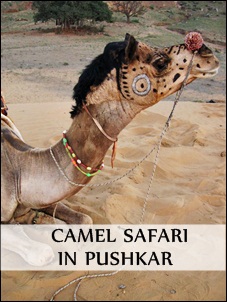
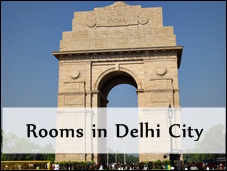
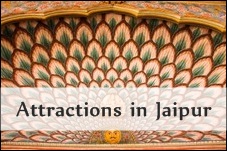
Comment this page:
Have your say about what you just read! Leave me a comment in the box below.